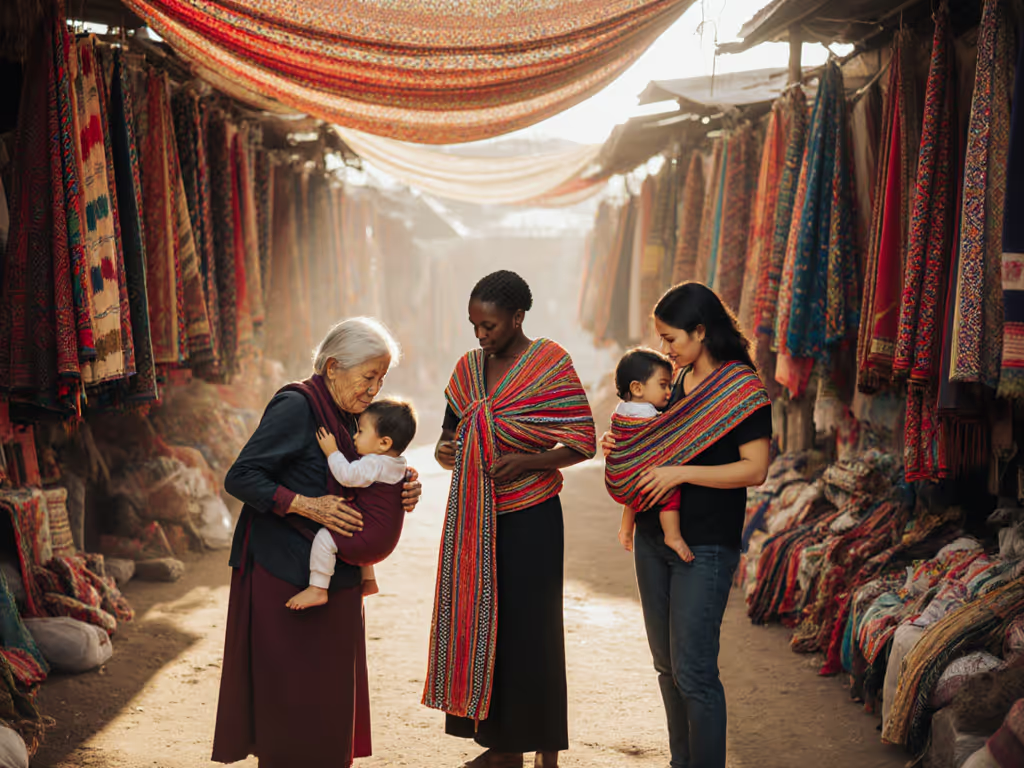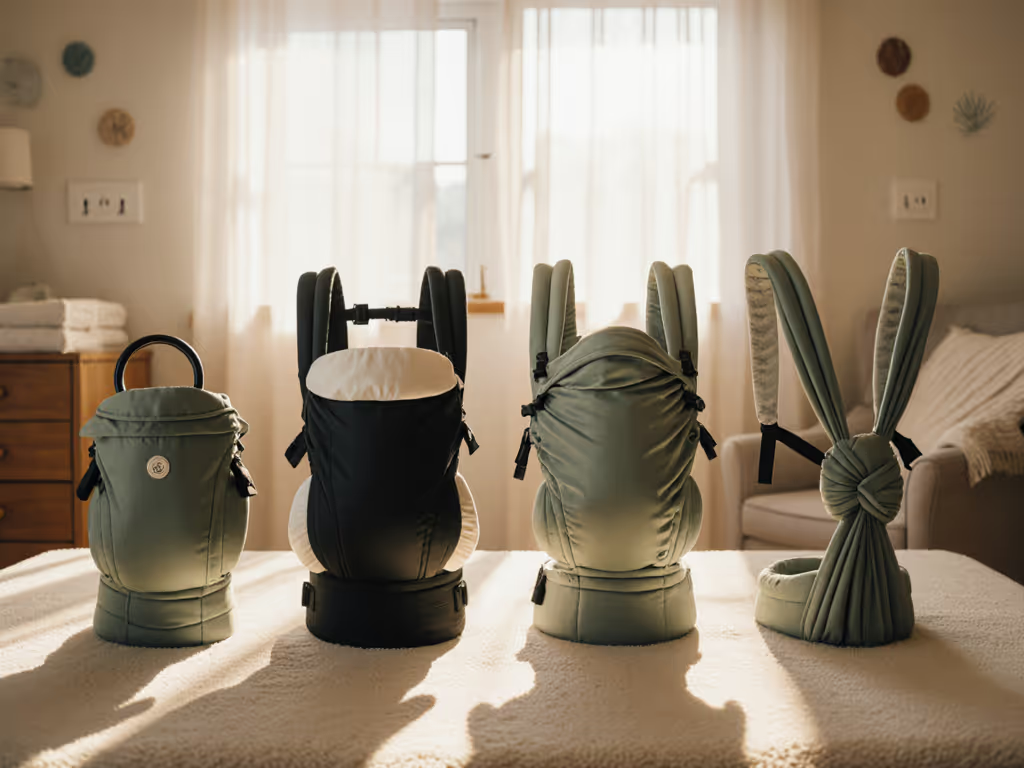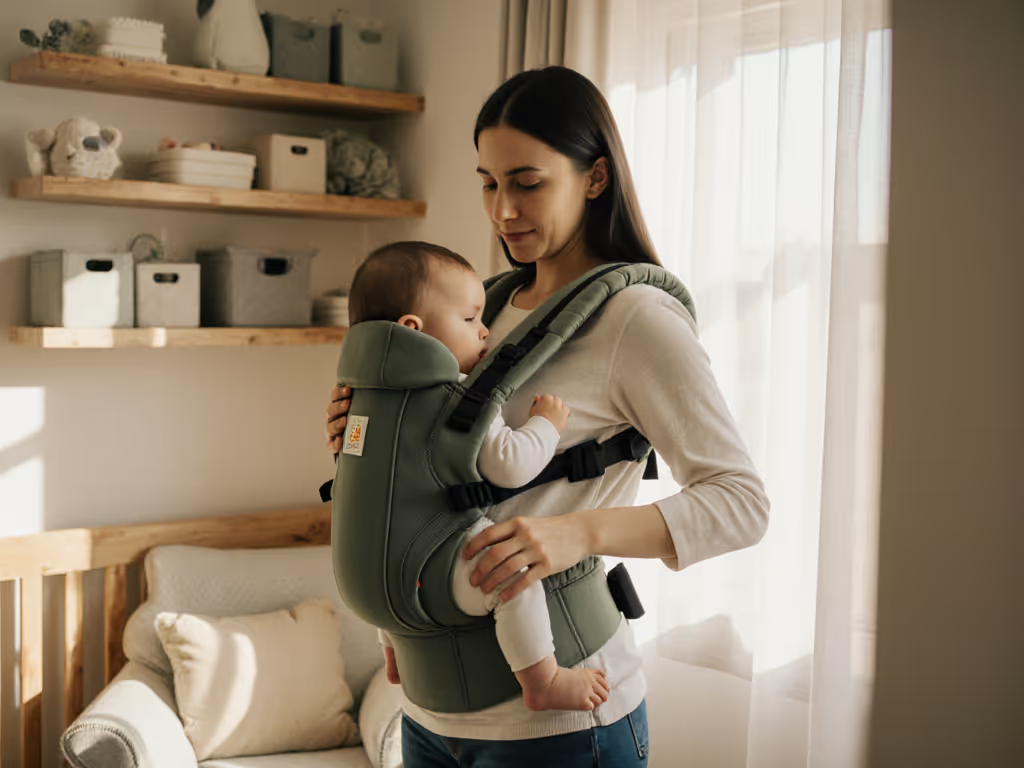
Babywearing Troubleshooting Guide for Safe, Comfortable Carry

Did you know that 14 infant suffocation deaths have been linked to sling carriers in just two decades? For many parents, babywearing offers comfort and closeness, but small mistakes can put your baby's safety at risk. Learning how to spot red flags and adjust your carrier properly makes a dramatic difference in comfort and security. This guide breaks down the most common babywearing issues and gives you practical ways to keep your little one safe every step of the way.
Quick Summary
| Key Point | Explanation |
|---|---|
| 1. Baby’s Position Is Crucial | Ensure the baby is positioned in an 'M' shape to support natural hip development and breathing. |
| 2. Regular Fit Adjustments Needed | Adjust the carrier straps before each use to ensure a secure and comfortable fit as both you and your baby grow. |
| 3. Monitor for Discomfort | Frequently check your baby's facial color and breathing to identify any potential discomfort or positional issues. |
| 4. Perform Safety Checks | Conduct mirror checks and safety bounce tests to confirm proper carrier adjustments and stability when wearing the baby. |
| 5. Trust Your Instincts | Always follow your parental instincts; if something feels off during babywearing, stop and readjust for safety. |
Step 1: Identify Common Babywearing Issues
Every parent and caregiver encounters challenges when learning to wear their baby safely and comfortably. Recognizing potential issues early can prevent discomfort and ensure your little one's security during close carrying.
The first step in troubleshooting involves understanding the most frequent problems parents experience with baby carriers. Watch for signs of improper positioning that could compromise your baby's breathing and overall safety. According to the U.S. Consumer Product Safety Commission, 14 infant suffocation deaths have been linked to sling carriers over two decades.
Key warning signs to monitor include:
- Baby's face pressed against your body
- Chin tucked tightly against chest
- Limited or restricted air movement
- Unusual positioning that creates a C shape around your infant
The American Academy of Pediatrics emphasizes that correct positioning means ensuring your baby's neck remains straight and their face stays clearly visible. Your carrier should allow complete airflow and support natural breathing patterns.
Quick visual checks help prevent potential risks. If you notice your baby seems uncomfortable or their breathing appears labored stop and readjust immediately. Trust your parental instincts and prioritize your infant's comfort and safety during every carrying session.
In our next section we will dive deeper into specific techniques for proper carrier positioning and adjustment.
Step 2: Adjust Carrier Fit and Straps
Properly adjusting your baby carrier is the secret to comfortable and safe babywearing. Getting the right fit means creating a secure environment that supports both you and your little one during every carry.
Start by understanding the fundamental fit principles. Professional safety standards from the ASTM specify that carrier straps and restraints should maintain a secure connection with no more than 1 inch of slippage under applied force. This means your carrier needs to feel snug but not constricting.
For waist strap adjustment:
- Position the waist belt directly on your natural waistline
- Ensure the belt is centered and level
- Tighten until it feels supportive but allows comfortable breathing
- Check that you can slide two fingers between the strap and your body
Shoulder strap techniques require similar precision. Pull straps evenly to distribute weight across your shoulders. Your goal is balance preventing strain on any single muscle group. Look for symmetry in how the carrier sits across your upper body.
Quick pro tip some parents miss checking carrier adjustments after initial setup. Babies grow quickly and your body changes too. Readjust before each use and perform a quick tension test by gently pulling on straps to confirm their security.
Remember your baby carrier should feel like a natural extension of your body. When fitted correctly it will provide comfort stability and peace of mind.
In our next section we will explore specific positioning techniques to ensure your baby remains safe and comfortable.
Step 3: Correct Baby Position and Support
Positioning your baby correctly is the foundation of safe and comfortable babywearing. Your goal is to create a supportive environment that mimics the natural curvature of your baby's developing body.
The Baby Safety Foundation provides clear guidance on optimal positioning. Their research emphasizes creating an 'M' shape with your baby's body where knees are higher than their bottom. This fetal or 'frog leg' position supports critical hip development and ensures natural alignment.
Start by checking these key positioning elements:
- Ensure baby's knees are spread wide and bent
- Support baby's bottom so their spine maintains a gentle curve
- Keep baby's head close enough to kiss but with clear airway access
- Verify that baby's face remains uncovered and visible
The American Academy of Pediatrics highlights the critical importance of neck positioning. Your baby's neck should remain straight with their chin positioned away from their chest to prevent breathing restrictions. Think of creating a natural seated position that allows easy breathing and comfortable movement.
A quick parent hack many forget check your baby's color and breathing every 15 minutes. Pale skin sudden sweating or unusual quiet could signal positioning issues. Your baby should look comfortable and relaxed.

Practice makes perfect. Each time you use your carrier take an extra moment to adjust and confirm your baby's position. With practice you will develop an intuitive sense of what feels right.
In our next section we will explore how to monitor your baby during wearing and recognize signs of potential discomfort.
Step 4: Monitor Baby's Comfort and Safety
Constant vigilance is your most powerful tool when babywearing. Your ability to recognize subtle signs of discomfort or potential risk can make all the difference in keeping your little one safe and content.
The Consumer Product Safety Commission provides critical guidance for ongoing monitoring. Their research emphasizes the importance of maintaining clear visibility of your baby's face at all times and ensuring their airways remain unobstructed.
Key monitoring techniques include:
- Check baby's facial color every 15 minutes
- Verify breathing remains consistent and relaxed
- Watch for signs of overheating or sweating
- Listen for any unusual sounds or changes in breathing pattern
- Ensure fabric does not cover mouth or nose
The American Academy of Pediatrics recommends frequent visual checks to confirm your baby can breathe freely. Look for these warning signs that might indicate positioning problems:
- Bluish or pale skin tone
- Unusual quietness or lack of movement
- Rapid or shallow breathing
- Neck bent at an uncomfortable angle
Parents often underestimate how quickly babies can become uncomfortable. Your carrier should feel like a comfortable extension of your body with your baby nestled securely and breathing easily.
Trust your parental instincts. If something feels off stop and readjust. No two babies are exactly alike and what works one day might need slight modification the next.
In our final section we will explore emergency protocols and when to seek professional guidance if you encounter persistent wearing challenges.
Step 5: Test and Refine Your Babywearing Setup
Mastering babywearing is a skill that develops through practice patience and careful refinement. Your goal is to create a comfortable and secure carrying experience that grows with your baby.
The Center for Babywearing Studies recommends a systematic approach to testing and improving your technique. Start by practicing near a bed or soft surface where you can safely experiment without risking injury.
Key testing steps include:
- Practice with a weighted doll first to build muscle memory
- Move slowly and gently when first wearing your baby
- Perform mirror checks to confirm correct positioning
- Ask a partner or experienced friend to review your technique
- Video record yourself to identify potential improvement areas
The Baby Carrier Industry Alliance emphasizes the importance of following manufacturer guidelines precisely. This means:
- Only using accessories specifically designed for your carrier
- Avoiding aftermarket modifications
- Checking weight and age recommendations carefully
- Replacing carriers that show signs of wear or damage
A helpful pro tip many parents overlook is performing a safety bounce test. Gently bounce in place while wearing your carrier. If anything feels loose unstable or uncomfortable readjust immediately.
Remember babywearing is both an art and a science. Each carrying session is an opportunity to learn and improve. Your confidence will grow with every successful wear.
Here's a summary of the main babywearing safety checks and adjustments for each step:
| Step | Main Focus | Key Checks | Professional Guidance Source |
|---|---|---|---|
| Step 1: Identify Issues | Recognizing warning signs | Airway clear<br>Face visible<br>Chin not tucked | U.S. CPSC<br>American Academy of Pediatrics |
| Step 2: Adjust Carrier | Carrier fit & straps | Snug straps<br>Waist centered<br>Shoulder even | ASTM Standards |
| Step 3: Correct Position | Baby's body alignment | 'M' position<br>Neck straight<br>Head close to kiss | Baby Safety Foundation<br>American Academy of Pediatrics |
| Step 4: Ongoing Monitoring | Ongoing safety | Check color<br>Monitor breathing<br>Look for overheating | Consumer Product Safety Commission |
| Step 5: Test & Refine | Practice and improvement | Safety bounce<br>Mirror checks<br>Partner feedback | Center for Babywearing Studies<br>Carrier Industry Alliance |
In our final section we will discuss troubleshooting common challenges and when to seek professional guidance.
Ensure Your Babywearing Journey Is Safe and Comfortable
Struggling with finding the perfect fit or wondering if your baby's position is truly safe? This guide highlights common challenges every caregiver faces when babywearing such as securing the right carrier fit and maintaining proper "M" shape positioning for healthier hip development. You deserve peace of mind knowing your little one breathes freely and stays comfortable throughout every carry.
At Caregiver Carry, we specialize in turning these concerns into confidence. Our detailed baby carrier reviews and step-by-step safety checklists help you select carriers designed to support your body type and lifestyle. Plus, our expert advice on safe positioning and adjustment offers practical solutions to eliminate discomfort and risk immediately.
Take control of your babywearing experience today by visiting Caregiver Carry. Learn how to transform challenges into enjoyable, secure bonding moments with your baby. Explore now and make every carry a safe, comfortable success.
Frequently Asked Questions
How can I tell if my baby is in the correct position in the carrier?
To ensure your baby is positioned correctly, check for the 'M' shape where their knees are higher than their bottom. Adjust their body until their spine has a natural curve and their head is close enough to kiss without obstructing their airway.
What should I do if my baby appears uncomfortable while I’m wearing them?
If your baby shows signs of discomfort, such as unusual quietness or rapid breathing, stop and readjust their position immediately. Check that their airway is clear and ensure they are not overheated by feeling their neck or back for excessive warmth.
How often should I check my baby during the carrying session?
You should monitor your baby every 15 minutes to confirm their breathing is consistent and their facial color looks healthy. Look for signs of discomfort, such as sweating or change in color, and adjust the carrier as needed.
What are the essential steps to adjust the baby carrier straps for a safer fit?
Start by positioning the waist belt at your natural waist and ensure it is centered. Tighten the straps until they feel secure but not constricting, allowing you to slide two fingers between the strap and your body comfortably.
What is the safety bounce test, and how should I perform it?
The safety bounce test involves gently bouncing in place while wearing your carrier to check for looseness or instability. If you notice any discomfort or shifting of the carrier, immediately readjust the straps to enhance security and comfort.
Why is ongoing monitoring important during babywearing?
Ongoing monitoring is crucial to ensure your baby’s safety and comfort. Regular checks can help you quickly identify signs of distress, such as restricted airflow or uncomfortable positioning, allowing you to make timely adjustments.



